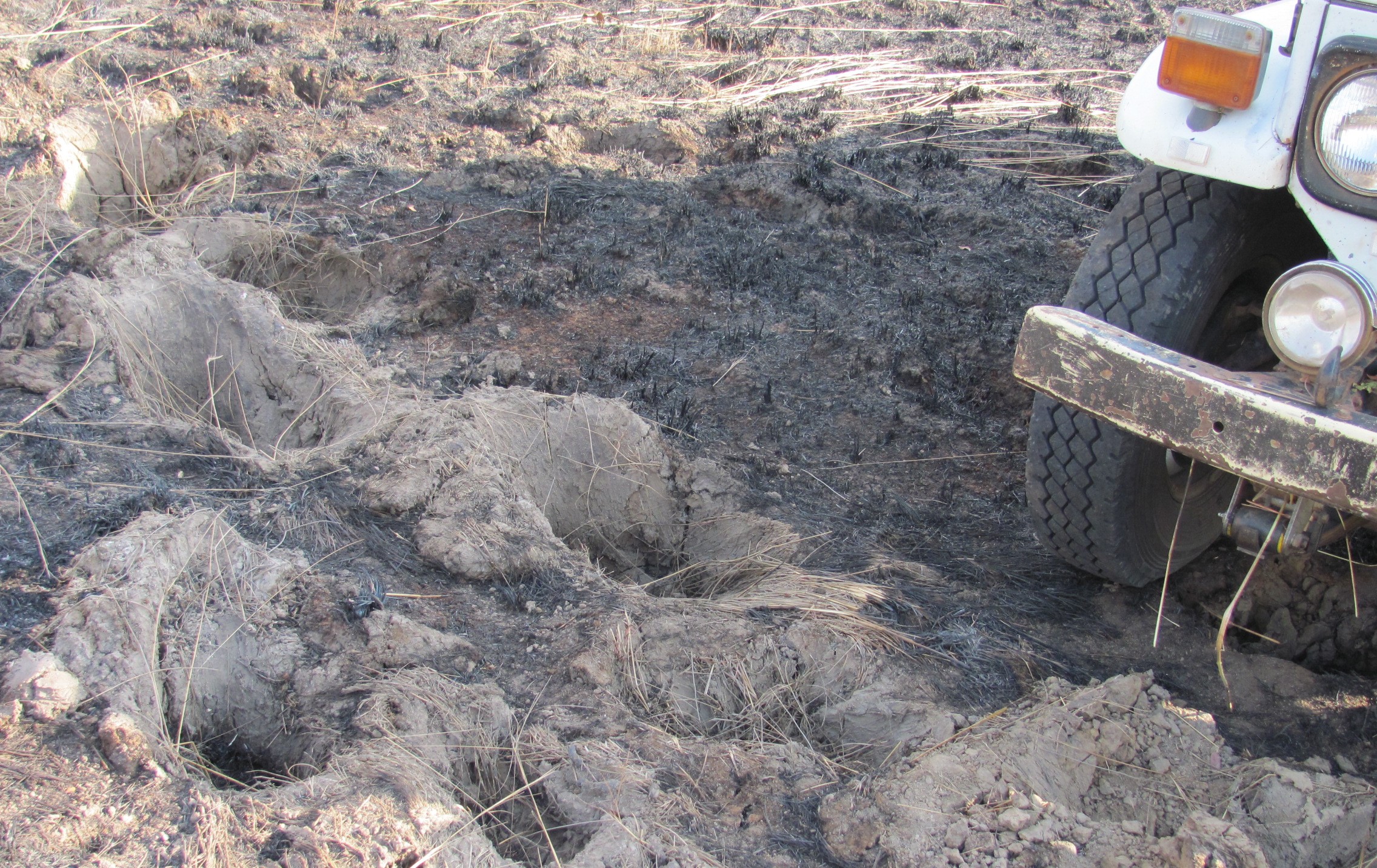Journeys back are meant to be nostalgic meanders along the faded tracks of the past weeks, filled with second chances to enjoy all that went unnoticed in the eager excitement of going deeper, further, into the unknown. They are meant to be a slow ease-out from the enchantment of the bush. They ask that you chose the easiest and least risky ways, because they are sad and without the energy of the way in.
And so, journeys back like open spaces even more than journeys in. Open spaces mean very little or none of the fury of chopping or pushing over or dragging away. But therein often lie peril, like in these dried-out elephant tracks in the mud.
Open spaces in proper African savanna bushveld are oddities. Usually smallish – more than one hundred paces across would already be quite large. They are devout of trees for a reason, usually one of three: rock shelves or very shallow soil, or too brackish, or too wet for trees to feel comfortable there. Whichever the reason, if you are travelling through the bush by vehicle, they are attractive – but they can be deceptive.
The brackish areas typically have quite deep holes dug by animals and humans in search of salt, but those are usually trodden open and easy to spot. The rocky shelves could be strewn with lose boulders but the grass cover is usually sparse so that they can safely be avoided.
It is the wet areas that are treacherous, with their waving seas of grass that seem to beckon you into a straight drive-through. Hidden there, might be sodden patches that could keep you stuck for hours, even days, and although possibly the subject of much fireside chuckling afterwards, is anything but that while it lasts.
Another peril of wetlands, even though they may no longer be wet, are these dried-out elephant tracks in the mud. They are like anti-tank mines, hidden in the grass. Hitting one of them at anything more than dead slow could mean serious damage to the suspension.
I have learnt to make sure I avoid them – through a few jarring jolts, followed by anxious inspections of the vehicle suspension, and one extremely painful limp-along on emergency repair, followed by a long night and day at a roadside repair shop where a hammer was the apex of technology. But, he had electricity, an angle grinder battered almost beyond recognition, an arc-welding machine of equal status, and, miraculously, welding rods – only five, and of dubious origin. Mercifully they worked, after a fashion. I used three, more than half his stock, and had to pay him a fortune for the privilege.
Anyway, without boring you with the poetic details of how, I got the front spring mounting fixed through a combination of the delicate arts of hammering, cutting with the grinder and welding with the sputtering arc-welder. I would have to make a better job of it later, but it would get me home.

